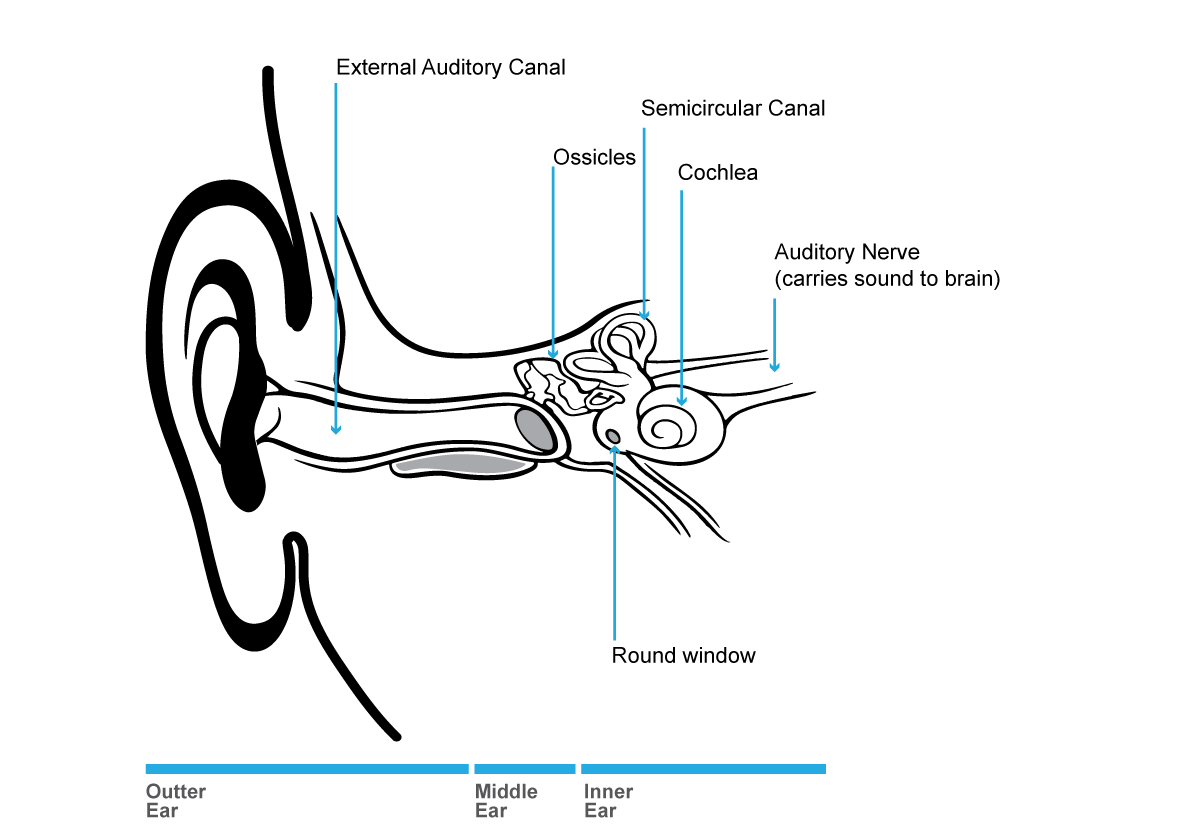How We Hear
How we hear?
Sound waves are essentially vibrations in air. These enter the ear through the ear canal and hit the eardrum, which in turn also vibrates. These vibrations are transmitted through the middle ear along a delicate bony chain (ossicular chain) into the inner ear. The inner ear is lined with thousands of tiny hair cells, with each have bundles of stereocilia on top (pictured below), which sway with the sound vibrations. This swaying leads to the hair cell converting the incoming vibrations into electrical impulses, which then travel through the auditory nerve to the brain. The brain senses these impulses as sound: be it music, speech, or simply a doorbell…

Excessively loud sounds can cause the delicate inner ear hair cells to diminish. The rate at which they die is dependent on the exposure time and/or whether these sounds continue to get louder. Hearing sensitivity also reduces as the number of hair cells decrease. Unfortunately, these hair cells do not regenerate, meaning that any residual hearing loss is permanent.

Healthy hair cells: This wispy bundle of stereocilia sits on top of a hair cell in the ear. The hair cell bundle sways with sound vibrations.
Damaged hair cells: Loud noise can damage the hair cell bundle, resulting in the hair cell being unable to respond to sounds.




